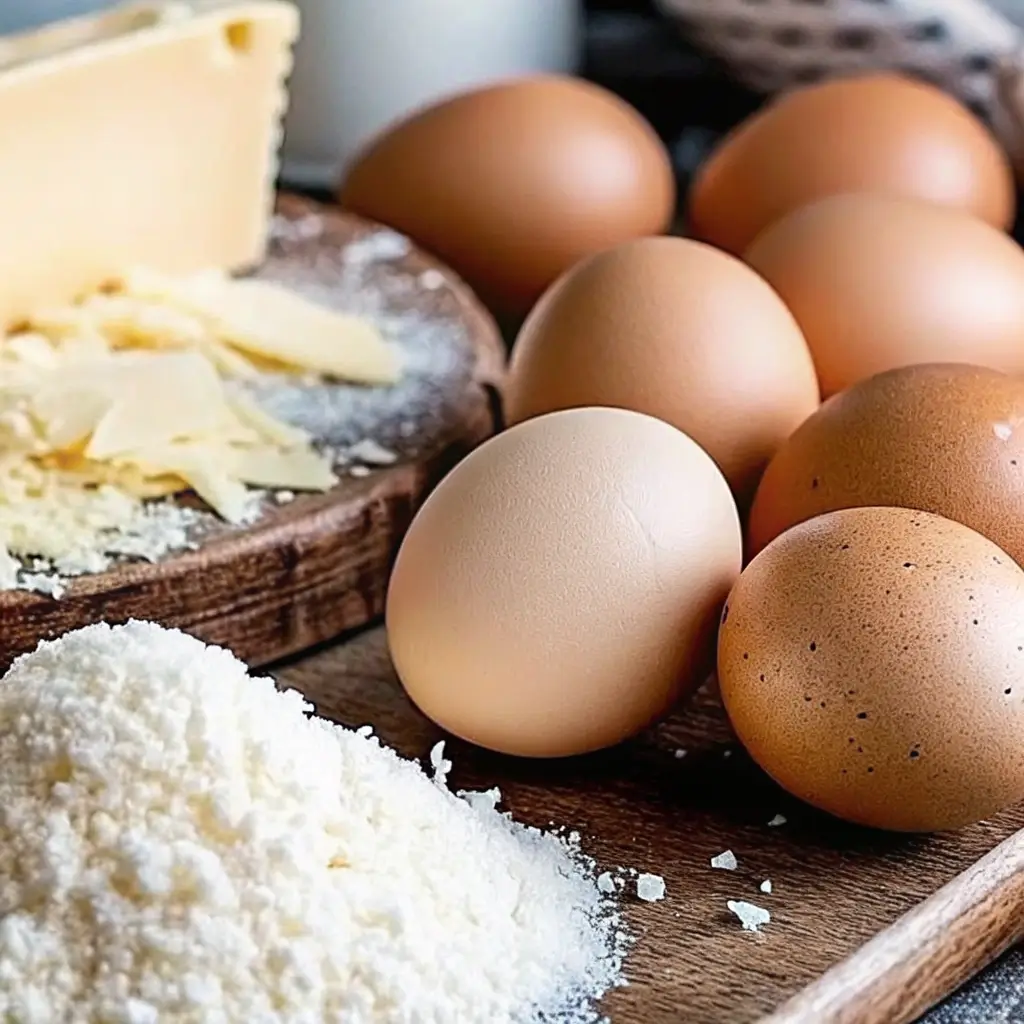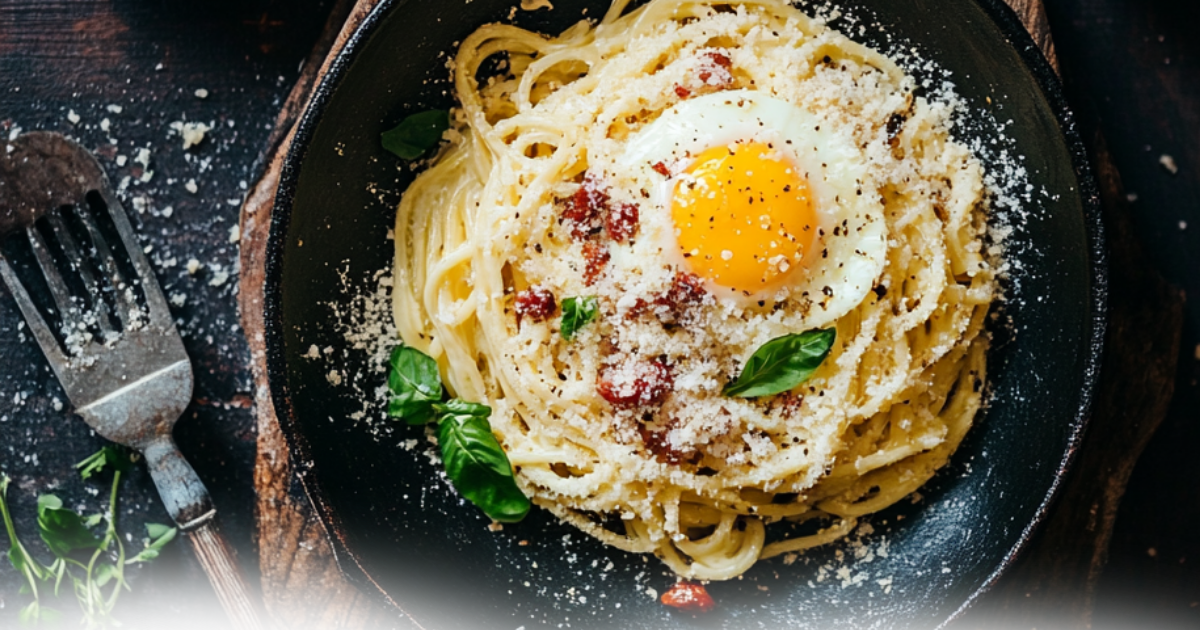When you take your first bite of carbonara, it’s not just a dish you’re tasting—it’s a story on a plate. This Italian classic captures the essence of culinary simplicity, combining humble ingredients to create a flavor profile that’s rich, creamy, and unforgettable. In this article, we’ll uncover what makes carbonara so special, from its distinctive taste to the key ingredients that define it. Let’s dive in and discover why this dish has captured the hearts (and stomachs) of food lovers worldwide.

Table of contents
Understanding the Essence of Carbonara
What is Carbonara?
Carbonara is a traditional Italian pasta dish, most often associated with the Lazio region. Its origins, while somewhat debated, are steeped in simplicity—a testament to Italian cooking. The name “carbonara” is thought to come from carbonaro, which translates to “charcoal burner,” possibly linking it to the working-class origins of the dish.

At its heart, carbonara is all about balance. Classic recipes use just a few ingredients: spaghetti or another pasta, eggs, pecorino Romano cheese, pancetta or guanciale, and freshly ground black pepper. No cream, no garlic, no fuss—just authentic, straightforward flavors.
The Core Flavor Profile
What does carbonara taste like? It’s creamy yet light, savory with a hint of saltiness, and rich without being cloying. The combination of cured chicken and sharp pecorino creates a bold, umami-packed base, while the eggs add a velvety smoothness that clings to every strand of pasta.
Each bite delivers a harmonious mix of flavors: the crisp, salty tang of pancetta; the nuttiness of cheese; and the peppery kick that rounds it all off. There’s a reason why food lovers describe it as comfort food at its finest—it’s indulgent but not overpowering, satisfying yet refreshingly simple.
Breaking Down the Taste
The Role of Eggs in the Flavor
When people wonder “What does carbonara taste like?”, they often worry about the role of eggs. Surprisingly, the egg doesn’t dominate the flavor but instead acts as a creamy binder. The secret lies in using just the yolks—or a mix of yolks and whites—gently cooked by the residual heat of the pasta. This creates a silky sauce that clings to the spaghetti without tasting “eggy.”

Eggs bring a rich, velvety texture that feels indulgent but light. Unlike dishes that rely on heavy cream, carbonara achieves its luscious consistency naturally. The trick is to toss the pasta quickly and evenly, avoiding any hint of scrambled eggs. This balance is what makes carbonara’s flavor so unique: a smooth, creamy backdrop without being overly rich.
Cheese as a Key Flavor Component
The cheese in carbonara is more than just a garnish—it’s a star player. Pecorino Romano, a sharp, salty cheese made from sheep’s milk, gives carbonara its distinctive bite. Its tangy profile cuts through the richness of the eggs and complements the cured chicken.
Some recipes incorporate Parmigiano-Reggiano alongside or instead of pecorino, adding a nuttier, slightly sweeter note. Either way, the cheese is responsible for the dish’s bold, savory edge. As it melts into the pasta, it creates a cohesive flavor that’s both comforting and indulgent. Without it, carbonara simply wouldn’t be the same.
Pancetta or Guanciale: Adding Umami
What sets carbonara apart from other creamy pasta dishes is the inclusion of pancetta or guanciale. These cured chicken products are fried until crispy, releasing flavorful oils that coat the pasta. Guanciale, offers a more robust and buttery flavor, while pancetta brings a milder, smoky touch.

Together with the cheese and eggs, the chicken introduces an intense umami flavor that’s both salty and savory. The crispy bits provide texture, while the rendered fat adds depth to the dish. This combination ensures that carbonara is never one-dimensional—it’s a symphony of complementary tastes.
Comparing Variations of Carbonara
Regional Differences in Taste
Although carbonara’s origins are Italian, the dish has taken on new forms worldwide. In Italy, the recipe remains strict: no cream, no onions, and no garlic. However, international adaptations often include these extras, altering the flavor.
Traditional carbonara tastes creamy but light, with the bold flavors of cheese and chicken standing out. By contrast, many Western versions lean into creaminess, often adding heavy cream to the sauce. While this makes for a richer dish, it shifts the focus away from the simplicity of the original.
Another common variation is the addition of garlic, which introduces a pungent, savory note. Although tasty, it’s not authentic. These adaptations may taste good, but they miss the delicate balance of flavors that define true carbonara. Read Is Carbonara Healthy or Unhealthy?
Vegan and Alternative Carbonara
n recent years, vegan carbonara has gained popularity. While it lacks the traditional ingredients, plant-based versions can still capture the spirit of the dish. Cashew cream, nutritional yeast, and tofu are often used to mimic the creamy texture and cheesy flavor, providing a satisfying alternative for those following a vegan lifestyle.
Instead of pancetta or guanciale, vegan versions might include smoked tempeh, mushrooms, or even coconut bacon. These substitutes bring their own distinct flavors and textures, creating a unique twist that appeals to a broader audience. Smoked paprika or liquid smoke can also be added to enhance the depth and replicate the smoky, umami essence of the original dish.
Interestingly, gluten-free or low-carb variations of carbonara have also become trendy, using zucchini noodles or gluten-free pasta. These alternatives might differ in texture but aim to preserve the original’s creamy, savory taste. Some recipes even incorporate almond flour or cauliflower to create low-carb, grain-free “pasta” bases, making the dish accessible to those with specific dietary restrictions.
As the world of alternative diets continues to expand, these creative carbonara adaptations showcase how culinary traditions can evolve while still honoring the essence of the original recipe. Whether vegan, gluten-free, or low-carb, there’s now a version of carbonara for nearly everyone to enjoy.
What Does Carbonara Taste Like in Dining Culture?
Carbonara as a Culinary Staple in Italy
In Italy, carbonara is more than just a meal—it’s a cultural icon. Traditionally served as a primo (first course), it embodies the Italian love for simple, high-quality ingredients. Whether enjoyed at a bustling trattoria or cooked at home for family dinner, carbonara holds a cherished place in Italian cuisine.
The dish’s roots in the Lazio region, especially Rome, are evident in its use of pecorino Romano cheese and guanciale. In its authentic form, it reflects Italy’s culinary philosophy: let each ingredient shine. This devotion to simplicity makes the question “What does carbonara taste like?” so intriguing, as the flavors are bold yet harmonious, relying on technique rather than embellishment.
International Interpretations
While Italy keeps its carbonara recipes strictly traditional, the rest of the world has adapted the dish in various ways. In some places, heavy cream, garlic, and even peas are added, altering the flavor and texture. While these versions may appeal to a broader audience, they stray far from the original’s essence.
These international twists reflect how carbonara has become a global favorite, but they also highlight the importance of authenticity. The delicate balance of flavors—salty, creamy, and savory—is what makes the dish unforgettable, and these adaptations often tip the scales.
For more pasta inspiration, check out our Carbonara Pizza Recipe, which puts a creative spin on the classic dish!
FAQs About What Carbonara Tastes Like?
Does Carbonara Taste Eggy?
Many people worry that the eggs in carbonara will dominate the flavor, but that’s not the case. When prepared correctly, the eggs simply add a creamy texture, blending seamlessly with the cheese and chicken for a balanced, velvety sauce.
What Kind of Cheese is Best for Carbonara?
Authentic recipes use pecorino Romano, a sharp and salty sheep’s milk cheese. Some variations incorporate Parmigiano-Reggiano for a nuttier taste, but pecorino remains the go-to for traditional carbonara.
Is Carbonara Supposed to Be Creamy?
Yes, but not in the way you might think. Unlike cream-based sauces, carbonara achieves its creaminess through a combination of eggs, cheese, and pasta water, creating a silky texture that feels luxurious without being heavy.
How Does Traditional Carbonara Differ from Alfredo?
While both dishes are creamy, Alfredo relies on butter and heavy cream, whereas carbonara’s creaminess comes from eggs and cheese.
Can You Make Carbonara Without Pork?
Absolutely! While traditional carbonara uses guanciale (cured pork jowl), you can substitute it with pancetta, bacon, or even chicken for a pork-free version. Vegetarian options might include mushrooms or smoked tofu for a similar savory depth.
What Kind of Pasta Works Best for Carbonara?
Spaghetti is the most common choice for carbonara, but you can also use bucatini, fettuccine, or rigatoni. The key is a pasta shape that holds the silky sauce well.
Why is Pasta Water Important in Carbonara?
Pasta water contains starch, which helps emulsify the sauce, ensuring it clings to the pasta and achieves that signature creamy consistency.
Is Carbonara Spicy?
Not traditionally, but some people enjoy adding black pepper for a subtle heat. If you prefer more spice, a pinch of red pepper flakes can be a delightful twist.
How Can I Avoid Scrambling the Eggs in Carbonara?
To prevent scrambled eggs, make sure to combine the sauce off the heat. Tossing the hot pasta with the egg mixture away from direct heat allows the residual warmth to cook the eggs gently, creating a creamy sauce.

